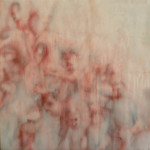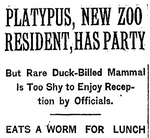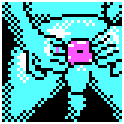|
spincube posted:I feel like this is a solved problem, but here goes: what's the best way of This used to be as simple as mapping those folders to a drive letter, check reconnect at login, then right click "my pictures", properties, and pick that target mapped drive. Do this while both folders are empty, then drag the files in to the mapped folder. I do not know if this still works in Windows 10 - they've been stripping out features from the non-enterprise version and replacing it xboxlivecandycrush. Note this gives you exactly one copy of your pictures. I would enable the recycle bin in your synology to help prevent accidental deletion, then whatever sync system you want to use. I use their native tool and it works great.
|
|
|
|

|
| # ? May 23, 2024 22:18 |
|
spincube posted:I feel like this is a solved problem, but here goes: what's the best way of Synology’s Cloud Station Server package is what you want to use. https://www.synology.com/en-global/knowledgebase/DSM/help/DSM/Tutorial/cloud_sync_files
|
|
|
|
H110Hawk posted:This used to be as simple as mapping those folders to a drive letter, check reconnect at login, then right click "my pictures", properties, and pick that target mapped drive. Do this while both folders are empty, then drag the files in to the mapped folder. I'd considered this, and I've briefly done so in the past - so (username)\Pictures was actually in E:\Google Drive\Pictures - however, I'd heard this could break poo poo software that looks for specific, hard-coded locations. This is why I've been looking at software that looks at Folder A, looks at Folder B, and simply sets up a two-way pipeline between the two so they're both the same. It also means I'm working from a local copy of things, instead of pulling things across my lovely home network. Arishtat posted:Synology's Cloud Station Server package is what you want to use. https://www.synology.com/en-global/knowledgebase/DSM/help/DSM/Tutorial/cloud_sync_files This was another option, given that it's a first-party Synology thing - however I've heard that this is going to be left to rot now that they've released Drive; which, per the name, is basically Google Drive, complete with a browser office suite and their Google Photos clone. So, I'm left with either possibly-end-of-life software, or something which could potentially work but is frankly overkill. I realise I'm being picky, and I appreciate the input. I'm going to take another, fresh look at this later... I've probably missed a blindingly obvious, simple solution somewhere. [edit] I've taken a fresh look at things and, after a little playing around, I've now gotten Syncthing to work well enough for my needs; my PC and NAS are now talking to each other, and there's a proper two-way pipeline between the directories I'd mentioned. I'm now going to leave well enough alone, until it inevitably breaks at the worst, most inconvenient time possible 
spincube fucked around with this message at 16:16 on Feb 24, 2019 |
|
|
|
I'm getting trash performance running qemu and trying various disk pass through methods to my NAS VM, was hoping I could get some ideas... Initially did PCI pass-through which worked fine performance wise (native speeds) but Linux apparently doesn't support hardware reset on the PCI bus (even though ESXI and Hyper-V-Core had no issues), so I didn't want to have to never reboot the machine unless I rebooted the host... Not a huge deal and I'll probably go back to this if I can't get an alternative with decent performance. I also have tried doing disk pass-through via a scsi_host <hostdev> and performance was half or less than native... What? How is it that bad? Also set up a <disk> pass-through, which was maybe marginally better in that it was at least more consistent, however it was still basically half the performance. Again tried with various parameters. My next guess is to try creating a 1:1 disk:controller as I read that might help, otherwise I'm out of ideas? I've configured the SCSI controller with vfio-scsi, host is running deadline IO scheduler Nas is noop and benchmarking with Fio. I can post my current domain XML if it's helpful.
|
|
|
|
So I am a newbie NAS user and came across something I can't quite wrap my head around. And forgive me if I am not using the right terminology here. I have a Netgear ReadyNAS RN2120 and I am trying to consolidate all of our personal back up files, photos, videos, etc from the past 15-20 years on it. On this NAS I have 4x8TB drives in RAID 5. The NAS is set up as 1 big volume but with various folders, and I have access to the "main folders" on all of our PCs for easy copy/pasting of our files. The issue I have is I am getting "not enough space" error messages when trying to consolidate the contents of large folders together, but yet it's no problem when I make a "new" folder on the NAS, it copies just fine. For example, I was trying to copy a folder on my local PC that's, say, 8GB folder into an NAS folder but get the error message. However, if I copy the folder over on its own (not into an existing folder) on the NAS it copies fine. Ideas what I'm doing wrong? I have TONS of free space on the NAS.
|
|
|
|
Maybe something wonky with the permissions where it won't allow folder creation through that paste mechanism and the error is just misleading?
|
|
|
|
Check that the folders (or users) do not have a disk quota set.
|
|
|
|
The 10TB WD MyBook is $180 at B&H for the next ~22 hours: https://www.bhphotovideo.com/c/product/1413208-REG/wd_wdbbgb0100hbk_nesn_10tb_my_book_desktop.html There's some shucking videos on youtube, it doesn't look much more difficult than the Easystore: https://www.youtube.com/watch?v=qqdz9k5vmV4
|
|
|
|
Rexxed posted:The 10TB WD MyBook is $180 at B&H for the next ~22 hours: I've shucked 3 without breaking clips or marking the case. A little fiddly, but certainly possible.
|
|
|
|
Three freshly shucked 10TB easystore all yielded whitelabel EMAZ. Wasn't bad but I had to use a jewelers flathead to convince them to start moving at the spine after I did the shimming, a cut-up loyalty card just deformed rather than motivating it. For possible RMA purposes, I'm just tossing the USB circuit, bumpers and screw back in the clamshell and closing it loosely, then throwing the boxes in my garage. Better way or that about cover it?
|
|
|
|
Harik posted:Three freshly shucked 10TB easystore all yielded whitelabel EMAZ. That should cover it, voiding warranties because you opened up a case isn't legal even though companies still try to deny warranties for it (in the US). They will want the thing in the enclosure for RMA, though.
|
|
|
|
Well, now I feel silly for posting the sale price since there's a new, lower, sale price. WD 10TB Elements $145.27 from B&H Photo. https://www.bhphotovideo.com/c/product/1433062-REG/wd_wdbwlg0100hbk_nesn_10tb_elements_desktop_hard.html WD 8TB Elements $139.99 https://www.bhphotovideo.com/c/product/1415979-REG/wd_wdbwlg0080hbk_nesn_8tb_wd_elements_desktop.html WD 6TB Elements $91.99 https://www.bhphotovideo.com/c/product/1373584-REG/wd_wdbwlg0060hbk_nesn_wd_elements_desktop_6000.html source: https://slickdeals.net/f/12877030-wd-elements-desktop-usb-3-0-external-hard-drive-10tb-145-27-6tb-91-99-free-s-h?src=frontpage
|
|
|
|
Unbelievable deal on the 10Gb. Now backordered a 2-4 weeks, but still took my order. I don't really even need more space at the moment, but for that price...
|
|
|
|
Welp just purchased my third 10 TB to shuck. Tempted to grab a fourth.
|
|
|
|
Back to USD159.99 now but still seems like a decent deal.
|
|
|
|
Rexxed posted:Well, now I feel silly for posting the sale price since there's a new, lower, sale price. You're all so loving welcome, because of course I just got easystores yesterday at $200 each and you can't price-match between them. What's the easystore premium buy you, chance at helium?
|
|
|
|
You can always return them if you haven’t opened the boxes. That’d be worth it for saving several hundred dollars for me.
|
|
|
|
Is this a reasonable transfer speed, going to a small SSD ZFS mirror:code:I was just expecting more than ~21MB/s sustained write on a pair of SSD's in a Zmirror. Do I need to align them to 4Kb sectors or something? Here is the setup: code:
|
|
|
|
Yeah, ashift should be 12 instead of 0.
|
|
|
|
I accidentally dropped an 8TB internal Western Digital Red HD while trying to swap a computer case and pet my cat at the same time. It dropped pretty hard, about 2 feet onto a concrete floor (but from a short enough distance that I was surprised it died as a result). Ever since then, the drive sounds like it's trying to read over and over again, but never does. In disk management, Windows 10 "sees" the drive as "offline" and having 100% storage free (in actuality it is probably like 8% free, I am a hoarder). Anyway, when I click "put disk online" it says that it cannot complete the operation. The sound the drive is making isn't too horrible. It's like a rapid heartbeat. I don't hear horrible screeching or anything. I am pretty sure this drive is screwed (unless the head thing is just stuck?), but I have two questions: 1) Is there anything I can do to fix it? There is no way I can afford to send it to a data recovery place. Most of the data on the drive is "replaceable", as in it's just a lot of game dumps, video editing projects I was working on, and personal home movies I had transferred from DV tapes a decade ago (another reason I don't wanna send it to a data recovery place). But it would suck to lose it all. Not to mention there ARE a few things that I would hate to lose, like VHS rips of music concerts I planned to upload to Youtube that will take me MONTHS to re-capture. I would be totally cool with trying to open the drive and "move" the head if it maybe is just stuck from dropping it. However, this drive looks like it has no goddamn screws anywhere. I have no clue how to open this drive up, even though I've opened 1TB WD drives in the past. There's no guides on opening this drive anywhere. And I am not even sure the freezer trick works on newer drives like this. 2)If I am completely screwed and can't fix this in any way, is there in a way in Windows 10 to get a list of all the files that were on this drive? For example, can I get a dump somewhere that says E:\linux isos\redhat.iso and E:\Public Domain Films\King Kong.avi and so on and so forth so that I know what to look for to try and find everything again? This drive was being indexed by Windows 10 so is there somewhere that I can get a list of all the files on this dead drive so that I can attempt to rebuild? Doesn't MFT write all the file names and directories for each drive somewhere? You all seriously have no idea how much I appreciate anyone who can give me any pointers or answer either or both questions. If I get this figured out somehow, I am mailing you all beer or something.
|
|
|
|
WWWWWWWWWWWWWWWWWW posted:I accidentally dropped an 8TB internal Western Digital Red HD while trying to swap a computer case and pet my cat at the same time. It dropped pretty hard, about 2 feet onto a concrete floor (but from a short enough distance that I was surprised it died as a result). Ever since then, the drive sounds like it's trying to read over and over again, but never does. In disk management, Windows 10 "sees" the drive as "offline" and having 100% storage free (in actuality it is probably like 8% free, I am a hoarder). Anyway, when I click "put disk online" it says that it cannot complete the operation. That disk is dead. If it is making a heartbeat sound that is the head going to unpark and go out over the platter, realizing shits hosed, and aborting. Next time don't pet a static generator (cat) while working with sensitive electronics. Also, backups. Sorry. The "free" space in disk management is space currently not under management by the os or a partition. Not the file system free space.
|
|
|
|
It's several years past the point where I should upgrade to some sort of NAS solution for all my personal documents, photos, and media files. I'm happy to build one myself, but it sure would be convenient if there was an easier one-stop option. I do see Synology all over, but I've heard it isn't great at plex transcoding. An ideal option for me would be something I could use as a plex media server, NAS, and have some sort of reliable backup (maybe 1:1 if it needs to be) so I can sleep easy with my files safe. Do you folks have any suggestions? e: this synology comes highly rated: https://www.amazon.com/SYNOLOGY-Bay-DiskStation-DS918-Diskless/dp/B075N1Z9LT?th=1 Delthalaz fucked around with this message at 06:13 on Feb 28, 2019 |
|
|
|
Methylethylaldehyde posted:Yeah, ashift should be 12 instead of 0. Gonna ashift the gently caress out of this array. Thanx!
|
|
|
|
taqueso posted:Maybe they have too many good ones and you can 'unlock' more space like some old video cards or cpus that were orginally lower quality bins. i'm not holding my breath That's called destroking or shortstroking and manufacturers will sometimes do that (usually it's to just get nice round numbers for odd-number platters though). Some of the old 750gb drives were actually 1tb drives destroked to fill a specific price point niche. Pretty rare in the era of big data drives though, it was mainly a thing in the <1tb per platter days. This is all done through factory firmware though and since it's strictly a minor storage boost and not a performance thing, no one has really pursued unlocking tools.
|
|
|
|
H110Hawk posted:That disk is dead. If it is making a heartbeat sound that is the head going to unpark and go out over the platter, realizing shits hosed, and aborting. Next time don't pet a static generator (cat) while working with sensitive electronics. Also, backups. That sucks. What about this part? is there in a way in Windows 10 to get a list of all the files that were on this drive? For example, can I get a dump somewhere that says E:\linux isos\redhat.iso and E:\Public Domain Films\King Kong.avi and so on and so forth so that I know what to look for to try and find everything again? This drive was being indexed by Windows 10 so is there somewhere that I can get a list of all the files on this dead drive so that I can attempt to rebuild? Doesn't MFT write all the file names and directories for each drive somewhere?
|
|
|
|
It's reading the directory tree on the drive itself. Unless at some point you run a manual directory listing and dump that to a file on a different drive, that data is gone as well.
|
|
|
|
Delthalaz posted:It's several years past the point where I should upgrade to some sort of NAS solution for all my personal documents, photos, and media files. I'm happy to build one myself, but it sure would be convenient if there was an easier one-stop option. I do see Synology all over, but I've heard it isn't great at plex transcoding. An ideal option for me would be something I could use as a plex media server, NAS, and have some sort of reliable backup (maybe 1:1 if it needs to be) so I can sleep easy with my files safe. Do you folks have any suggestions? The DS918+ is great. I've had no issues with Plex transcoding, either 720p or 1080p. I typically only have 1-2 clients connected at a time though.
|
|
|
|
IOwnCalculus posted:It's reading the directory tree on the drive itself. Unless at some point you run a manual directory listing and dump that to a file on a different drive, that data is gone as well. Are you 100% sure? I could have sworn that at times UltraSearch (which instead of using the indexing file, it used MFT) and getting results from a hard drive that was disconnected from my PC. I could be wrong but I am pretty certain I did. Also the Windows indexing file is a stupidly large file and only on my C:. There's no way to dig into that file to find out the filenames on the dead drive? I will donate $100 to your charity of choice or directly to your checking account to anyone here can somehow help me with this. frh fucked around with this message at 15:43 on Feb 28, 2019 |
|
|
|
In that instance my only suggestion is to pay more than $100 (think closer to $500) to get a professional to try.
|
|
|
|
Yeah I don't really care enough about the data to spend $500 on getting it fixed because I care more about knowing what was on the drive more than retrieving it. It's gonna be one of those things that haunts me for years ("I can't find such and such, I bet it was on that drive!!!") but if I had the file list I'd be 95% fine with that I'm really surprised there's no way to explore the indexing file to see what was on that drive. I guess Microsoft encrypts it?
|
|
|
|
WWWWWWWWWWWWWWWWWW posted:Are you 100% sure? I could have sworn that at times UltraSearch (which instead of using the indexing file, it used MFT) and getting results from a hard drive that was disconnected from my PC. I could be wrong but I am pretty certain I did. If your windows install has the index file make a copy of it and start looking for forensics tools which will dump it. Remember to put a copy not on your computer where you are running these tools.
|
|
|
|
Delthalaz posted:It's several years past the point where I should upgrade to some sort of NAS solution for all my personal documents, photos, and media files. I'm happy to build one myself, but it sure would be convenient if there was an easier one-stop option. I do see Synology all over, but I've heard it isn't great at plex transcoding. An ideal option for me would be something I could use as a plex media server, NAS, and have some sort of reliable backup (maybe 1:1 if it needs to be) so I can sleep easy with my files safe. Do you folks have any suggestions? I am in the same situation, and I'm thinking of going with this box as well. Never heard about the problems with Plex though, but I'm mostly looking to use it as a file and backup storage.
|
|
|
|
WWWWWWWWWWWWWWWWWW posted:("I can't find such and such, I bet it was on that drive!!!") Did you have anything other than easily re-downloadable Linux ISOs on there? Honestly, I would just re-download them as you want them. I willingly wiped out my Linux ISO collection the other day as it was easier to just re-download them even than move them from old home server to the new one.
|
|
|
|
WWWWWWWWWWWWWWWWWW posted:Yeah I don't really care enough about the data to spend $500 on getting it fixed because I care more about knowing what was on the drive more than retrieving it. It's gonna be one of those things that haunts me for years ("I can't find such and such, I bet it was on that drive!!!") but if I had the file list I'd be 95% fine with that Your posts made me curious on how to at least dump the paths in the index, and I ended up with this powershell script that I hacked down from this gist since I don't really know powershell that well/at all. code:At least it printed a bunch of paths. I dunno if it's a complete list, or what Windows Search does once a drive goes missing.
|
|
|
|
Heners_UK posted:Did you have anything other than easily re-downloadable Linux ISOs on there? Honestly, I would just re-download them as you want them. I willingly wiped out my Linux ISO collection the other day as it was easier to just re-download them even than move them from old home server to the new one. Most of the stuff that wasn't Linux ISOs and public domain films were things that I had transferred from video tape and MiniDV tapes. It will take me eons to redo all of it, but it's not LOST lost. But not knowing what was on those drives is going to be a huge pain in the rear end for years to come. Honestly me finding out the filenames and directories that were on the drive is almost as important as the data itself. ChiralCondensate posted:Your posts made me curious on how to at least dump the paths in the index, and I ended up with this powershell script that I hacked down from this gist since I don't really know powershell that well/at all. Holy poo poo, I love you. So before I put in that huge script, I have to type what exactly? Set-ExecutionPolicy -ExecutionPolicy <PolicyName>? If so, what <PolicyName> do I type in? Sorry if this is a dumb question. I've been using DOS and CMD commends forever but never used PowerShell much (maybe once and I don't even remember what for). This is what it looks like on my end but I don't see a dump of filenames anywhere. Here is what I did:  You have no idea how much I appreciate this help. frh fucked around with this message at 18:22 on Feb 28, 2019 |
|
|
|
WWWWWWWWWWWWWWWWWW posted:So before I put in that huge script, I have to type what exactly? Set-ExecutionPolicy -ExecutionPolicy <PolicyName>? If so, what <PolicyName> do I type in? code:edit after seeing your screenshot: oh, you have to run the function Blah (I think you can just type code:
|
|
|
|
ChiralCondensate posted:No problem, you're not much behind me on powershell. I did OK so I simply typed blah and a shitload of filenames started coming up but then shortly after I got this: code:Thank you so so so so so so so so much
|
|
|
|
ChiralCondensate posted:Your posts made me curious on how to at least dump the paths in the index, and I ended up with this powershell script that I hacked down from this gist since I don't really know powershell that well/at all. This is awesome. Edit: Oh to redirect the output do it like `blah >logfile 2>errorlog`
|
|
|
|
H110Hawk posted:This is awesome. OK I did that and this is in the errorlog.txt code:
|
|
|
|

|
| # ? May 23, 2024 22:18 |
|
WWWWWWWWWWWWWWWWWW posted:OK so I simply typed blah and a shitload of filenames started coming up but then shortly after I got this: Hm, 0x80041607 is QUERY_E_TIMEDOUT. How long does it run for before saying that? If you redirect the output per H110Hawk's suggestion, does it still happen? (edit: looks like it does per your new post.) How many paths are printed? code:code:
|
|
|






 so I could say that I finally figured out what this god damned cube is doing. Get well Lowtax.
so I could say that I finally figured out what this god damned cube is doing. Get well Lowtax.
































